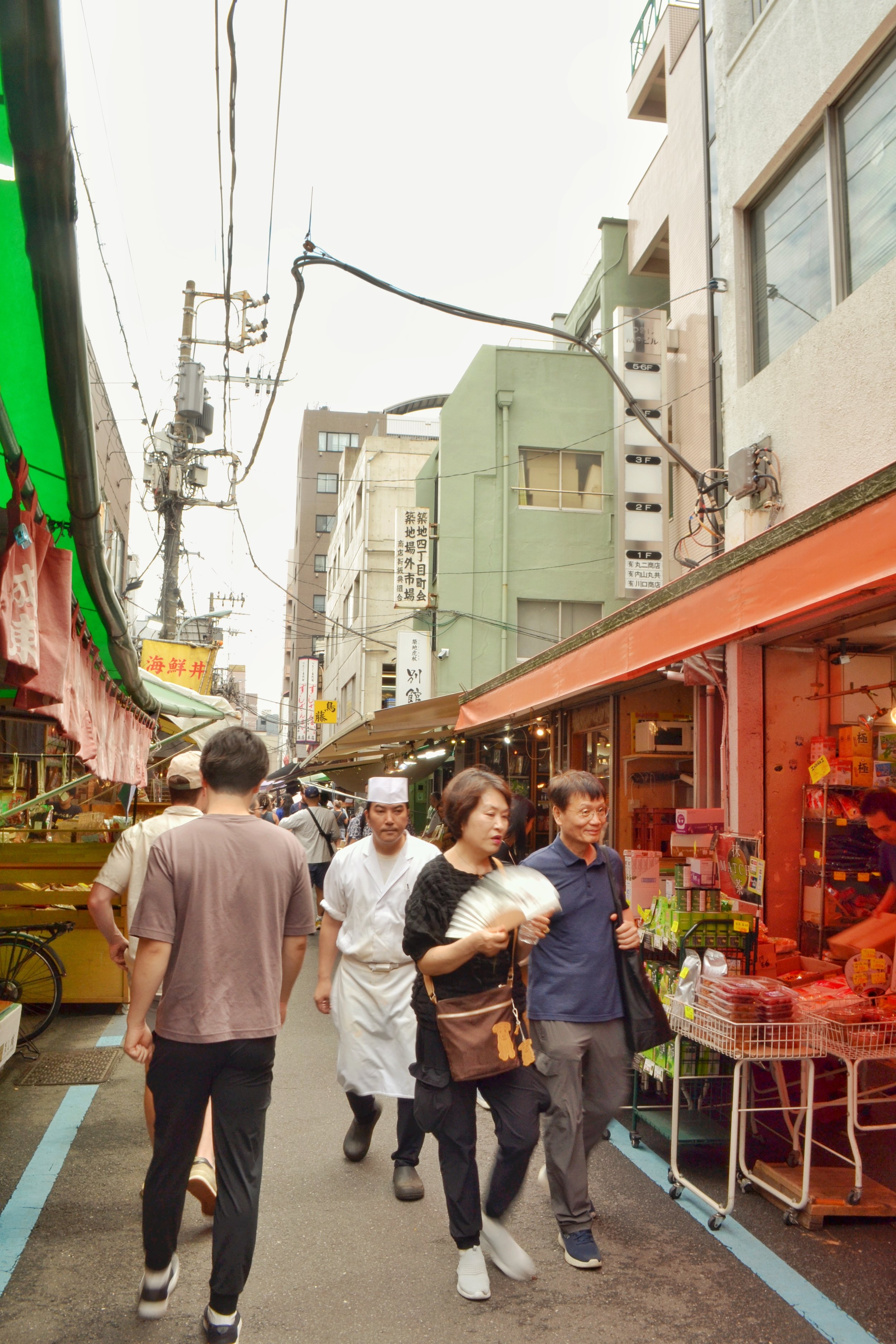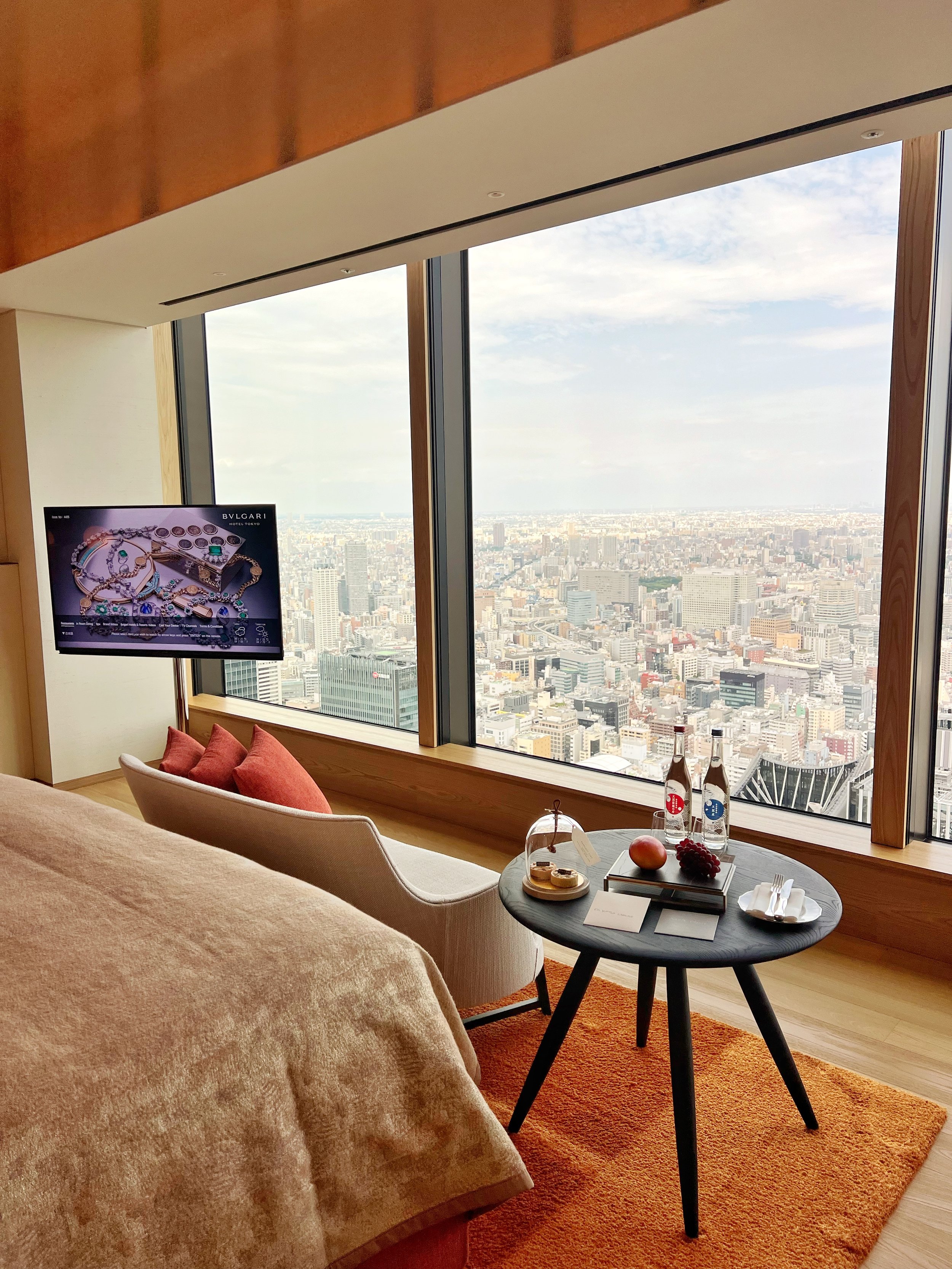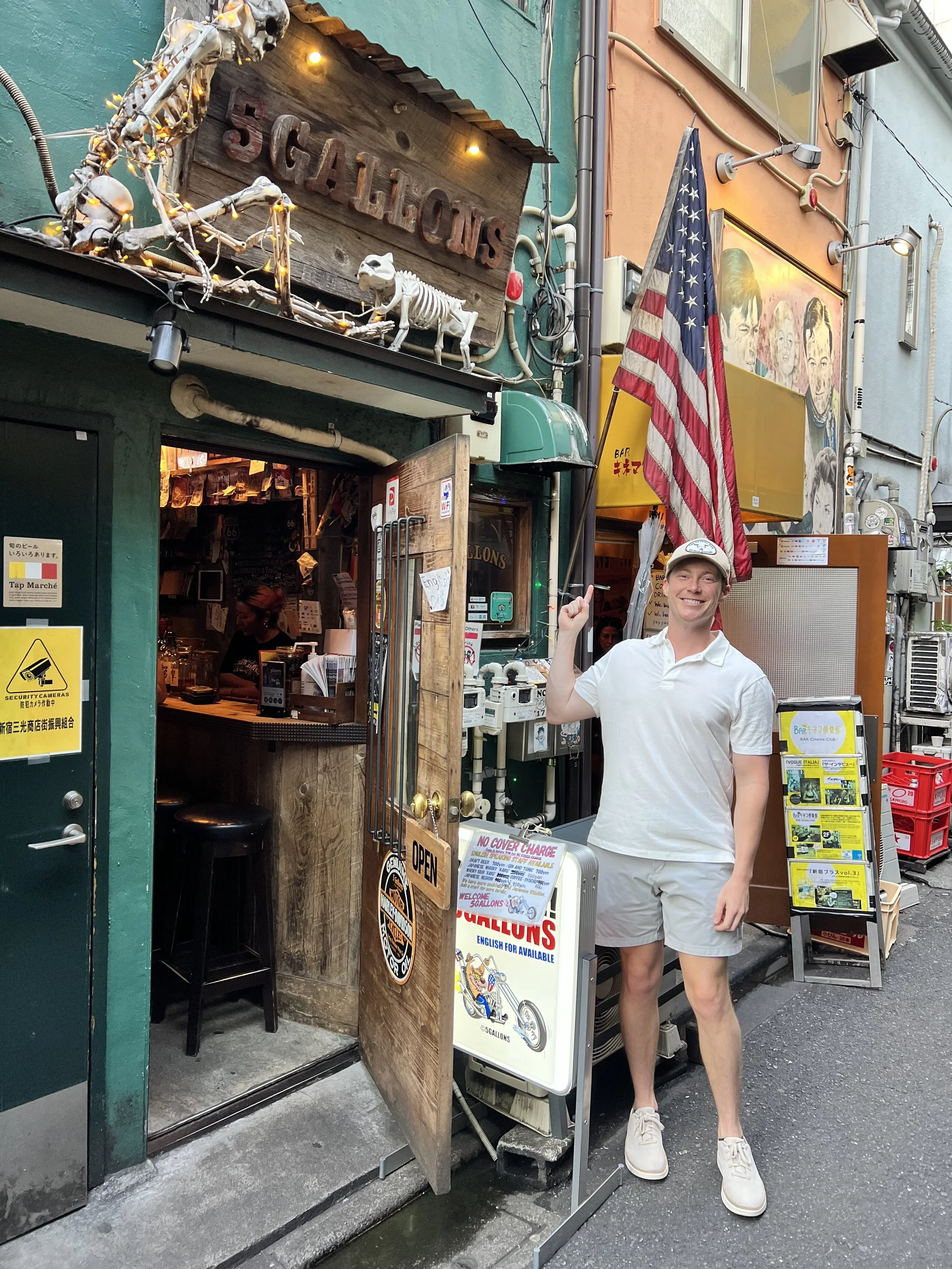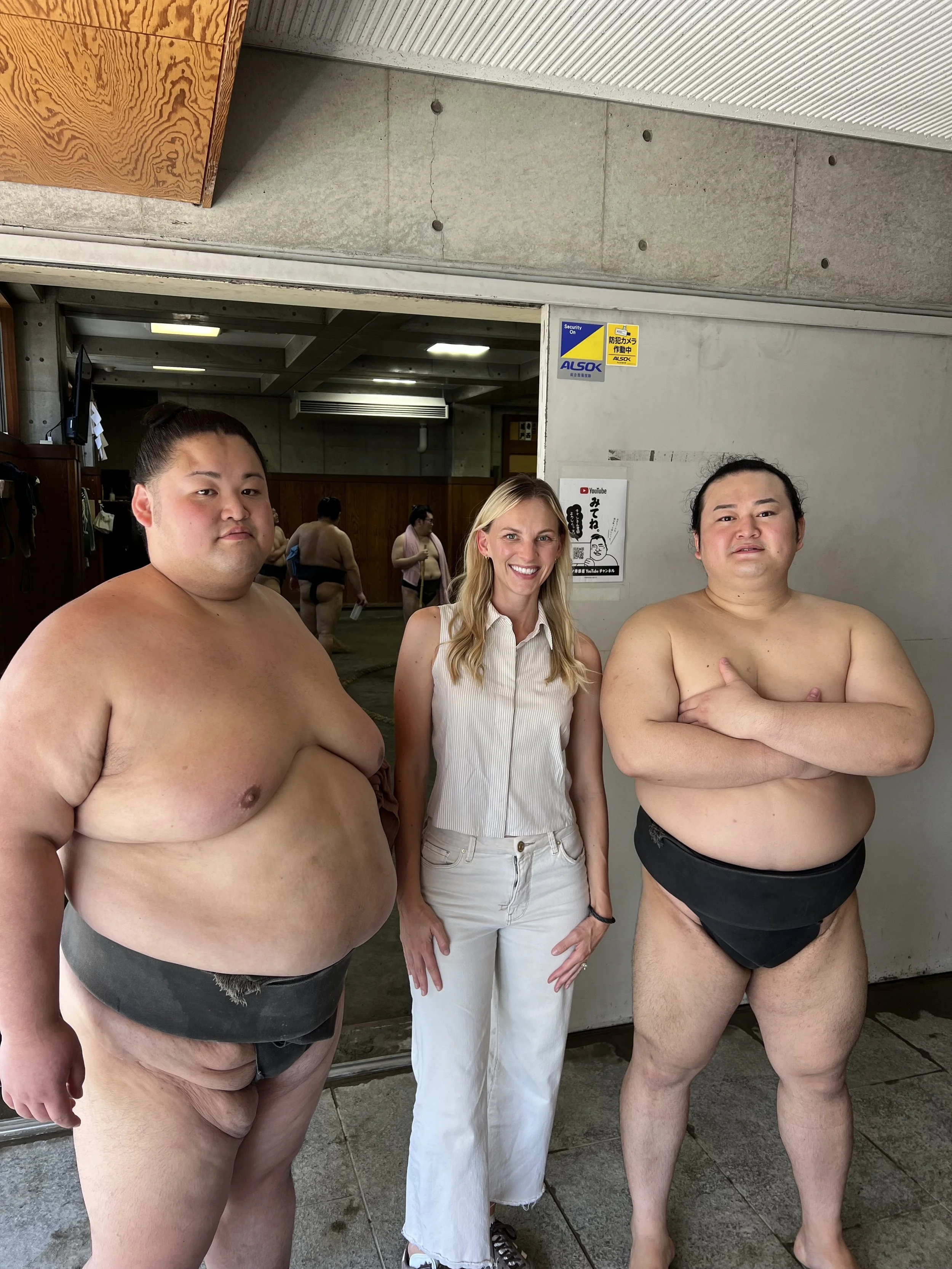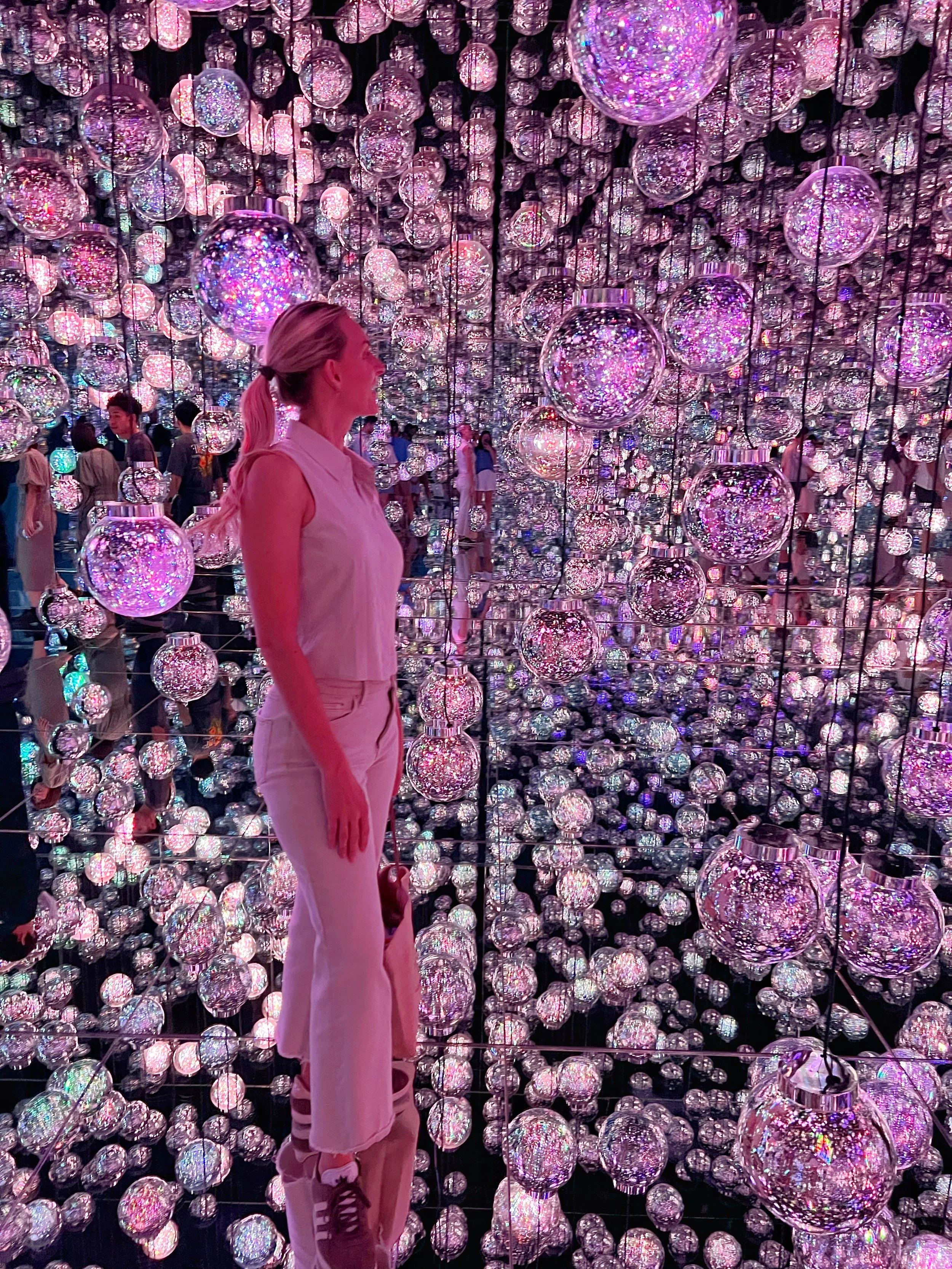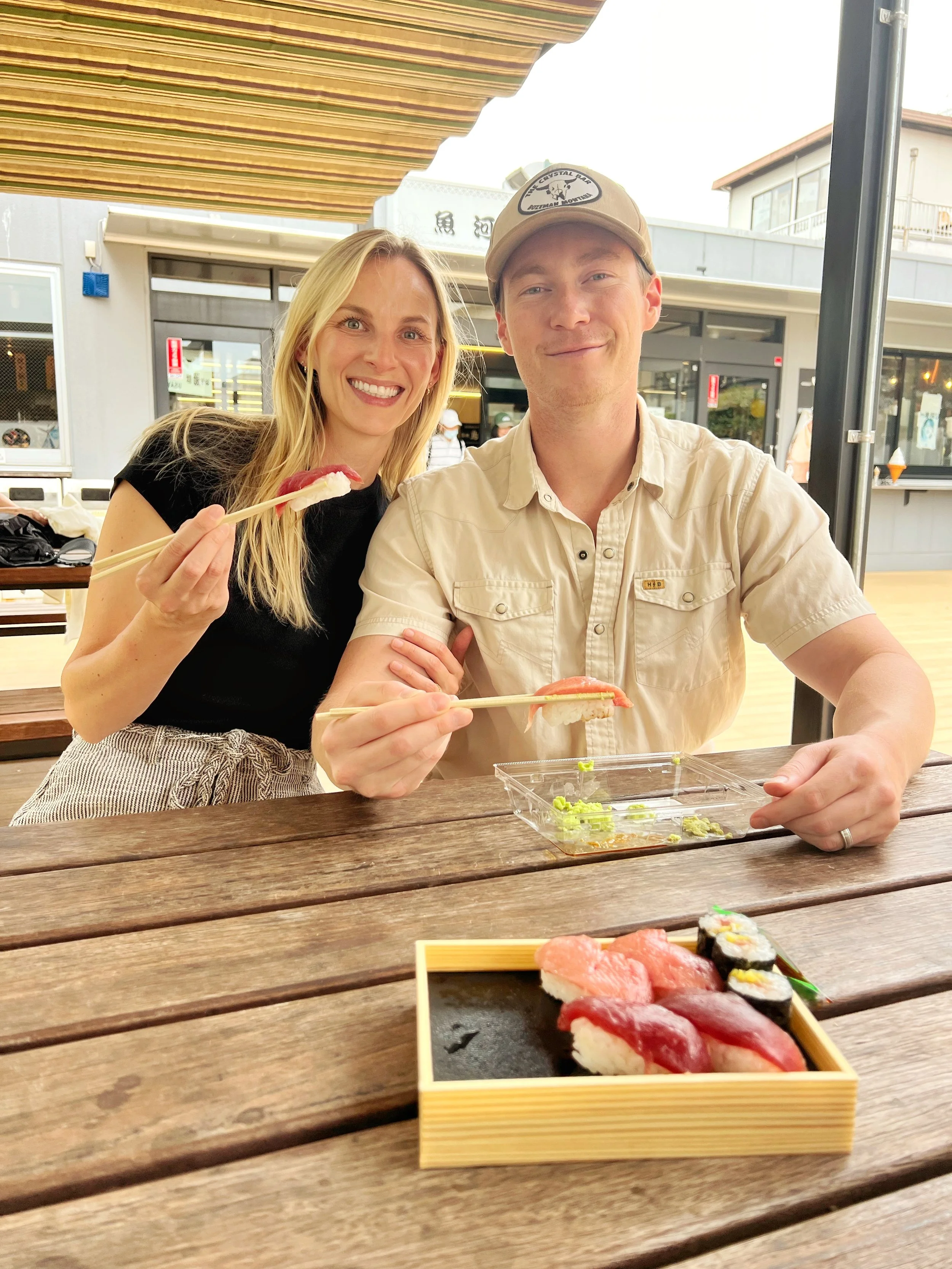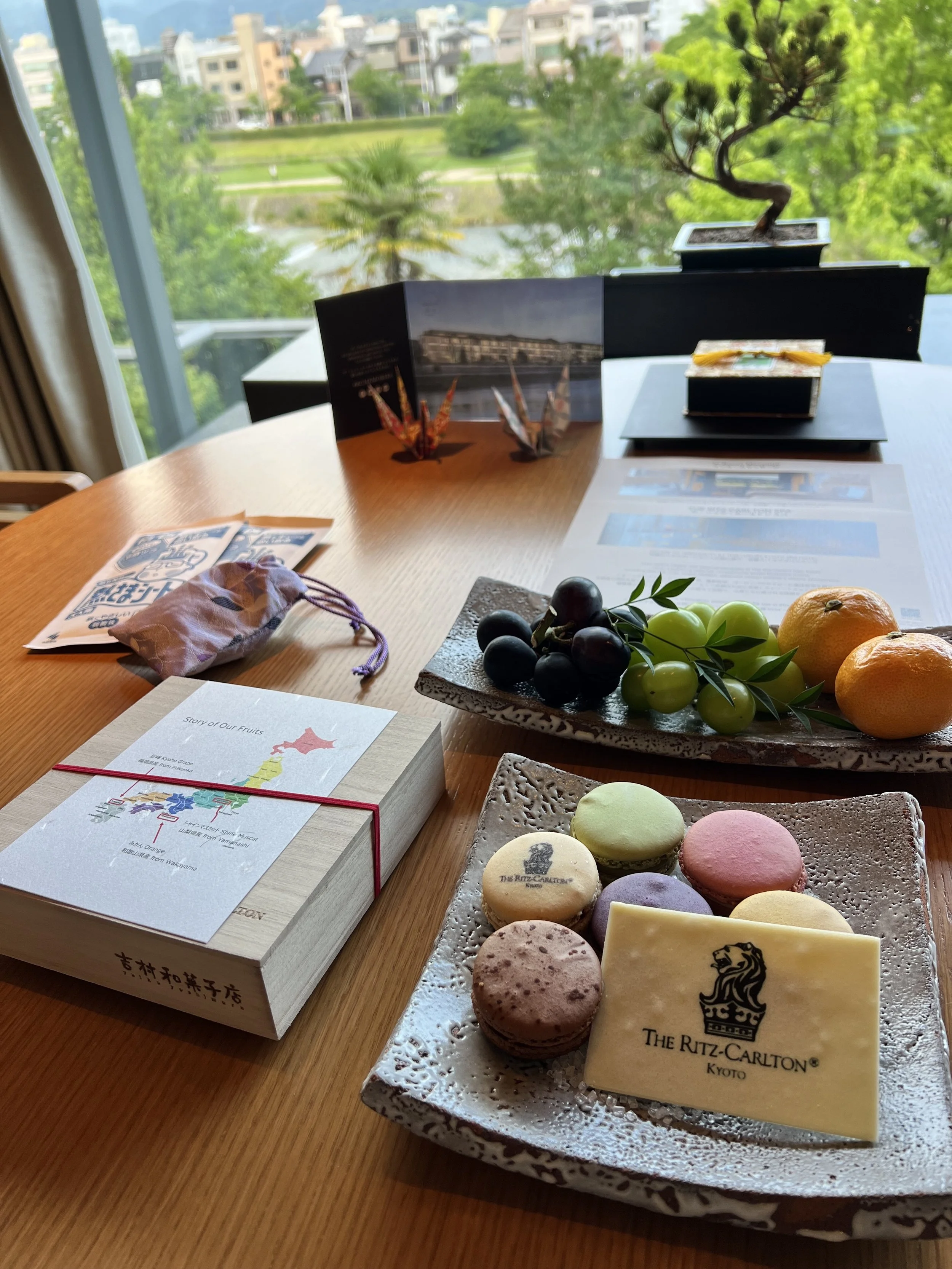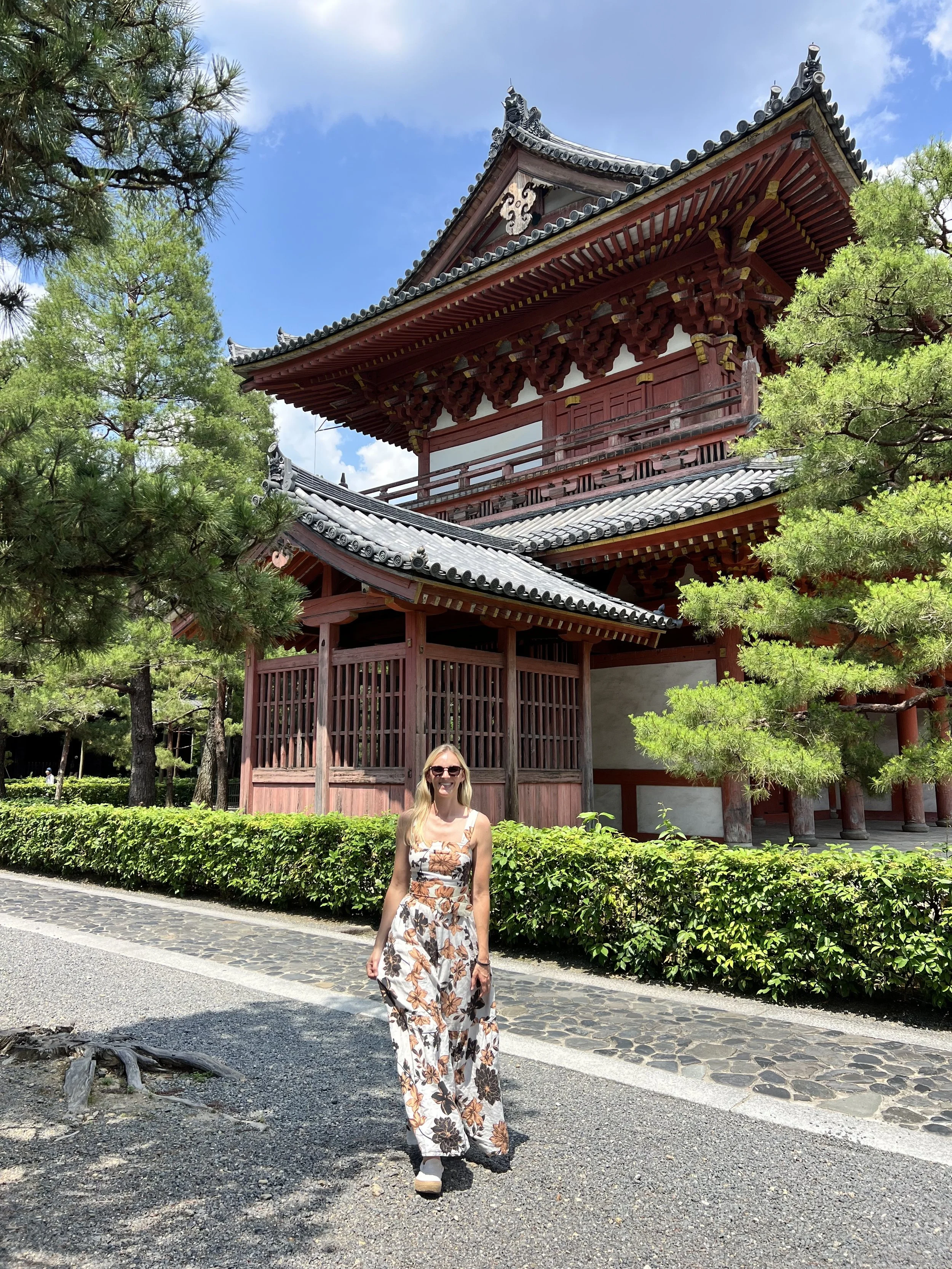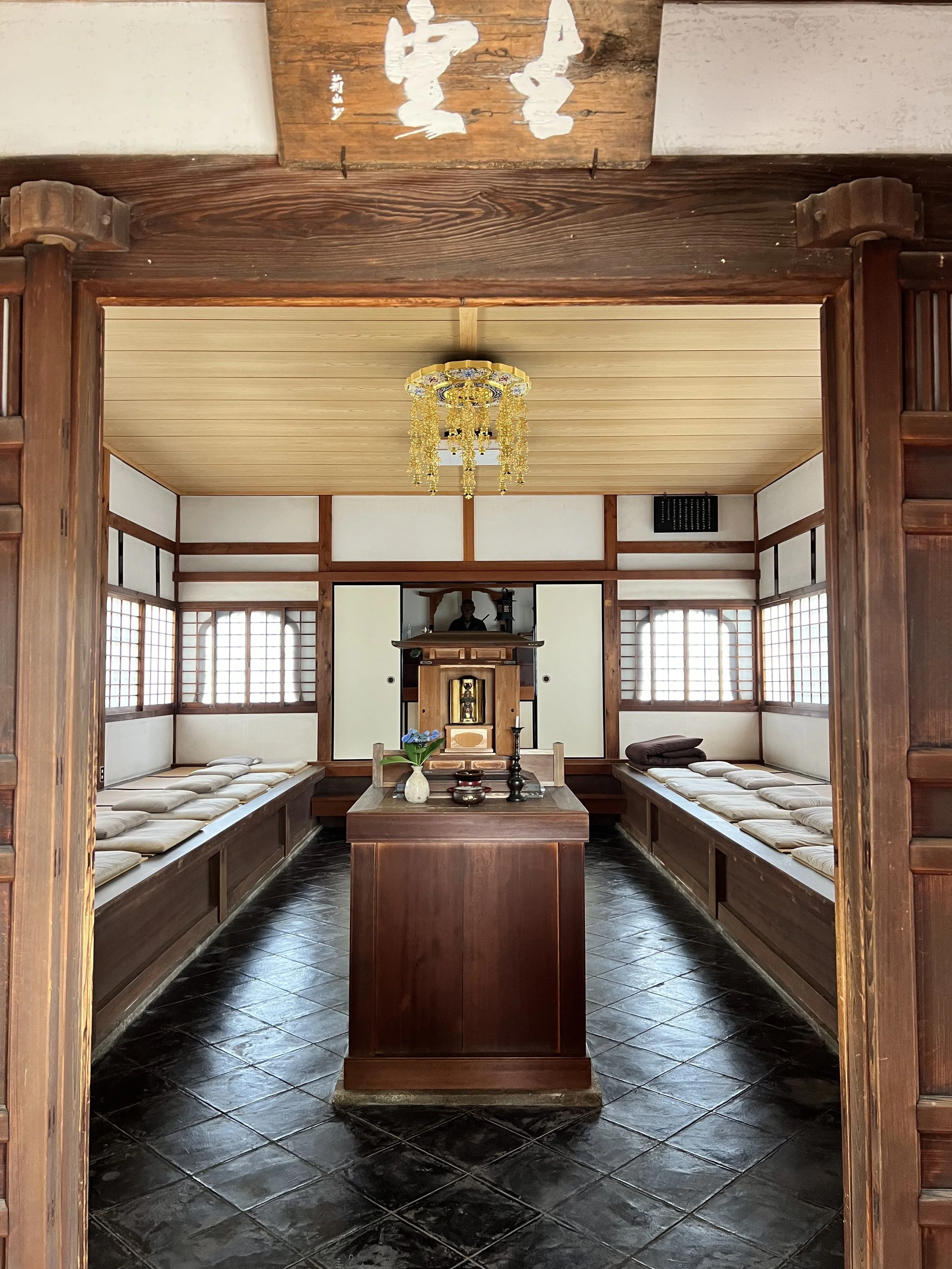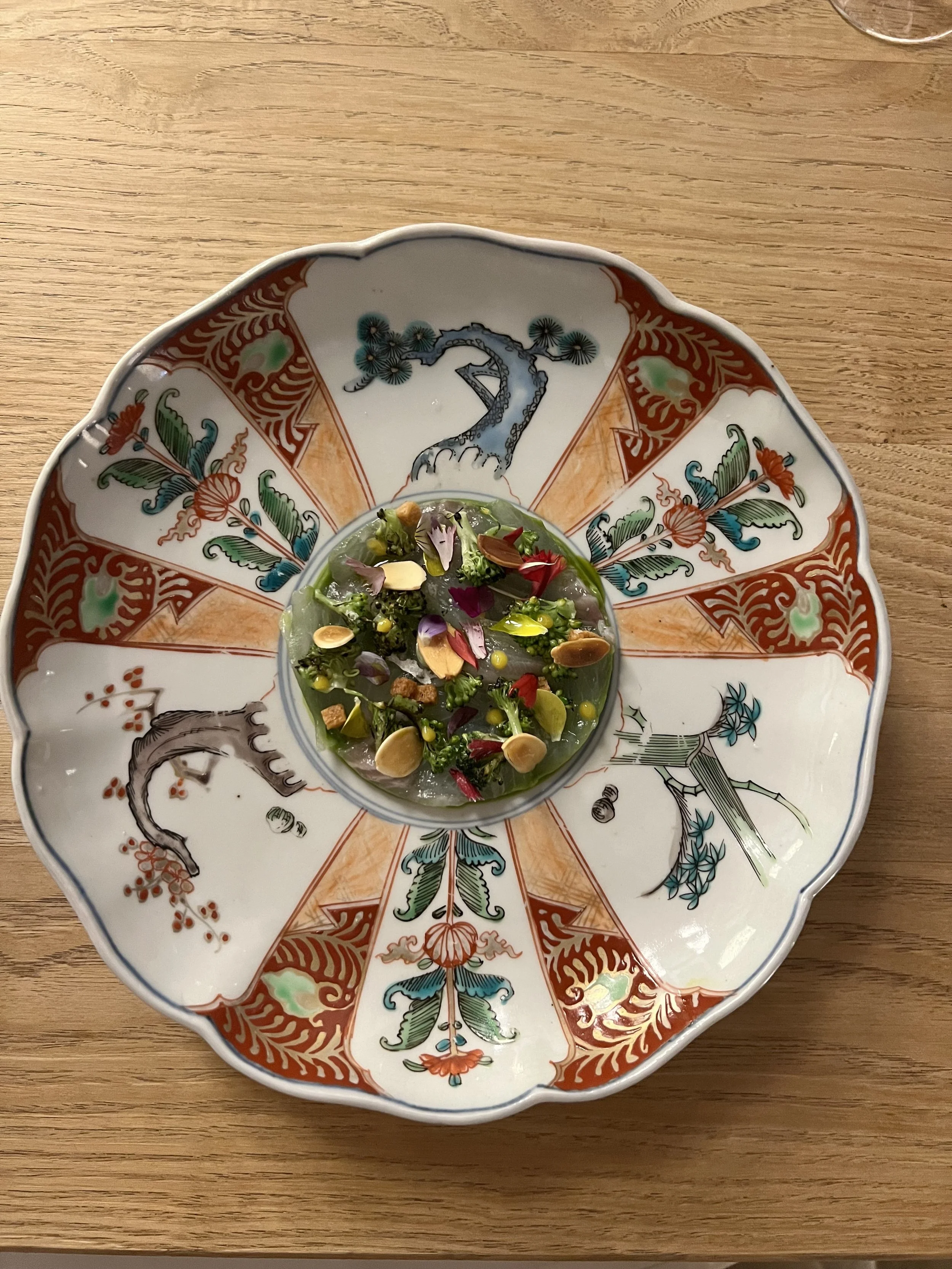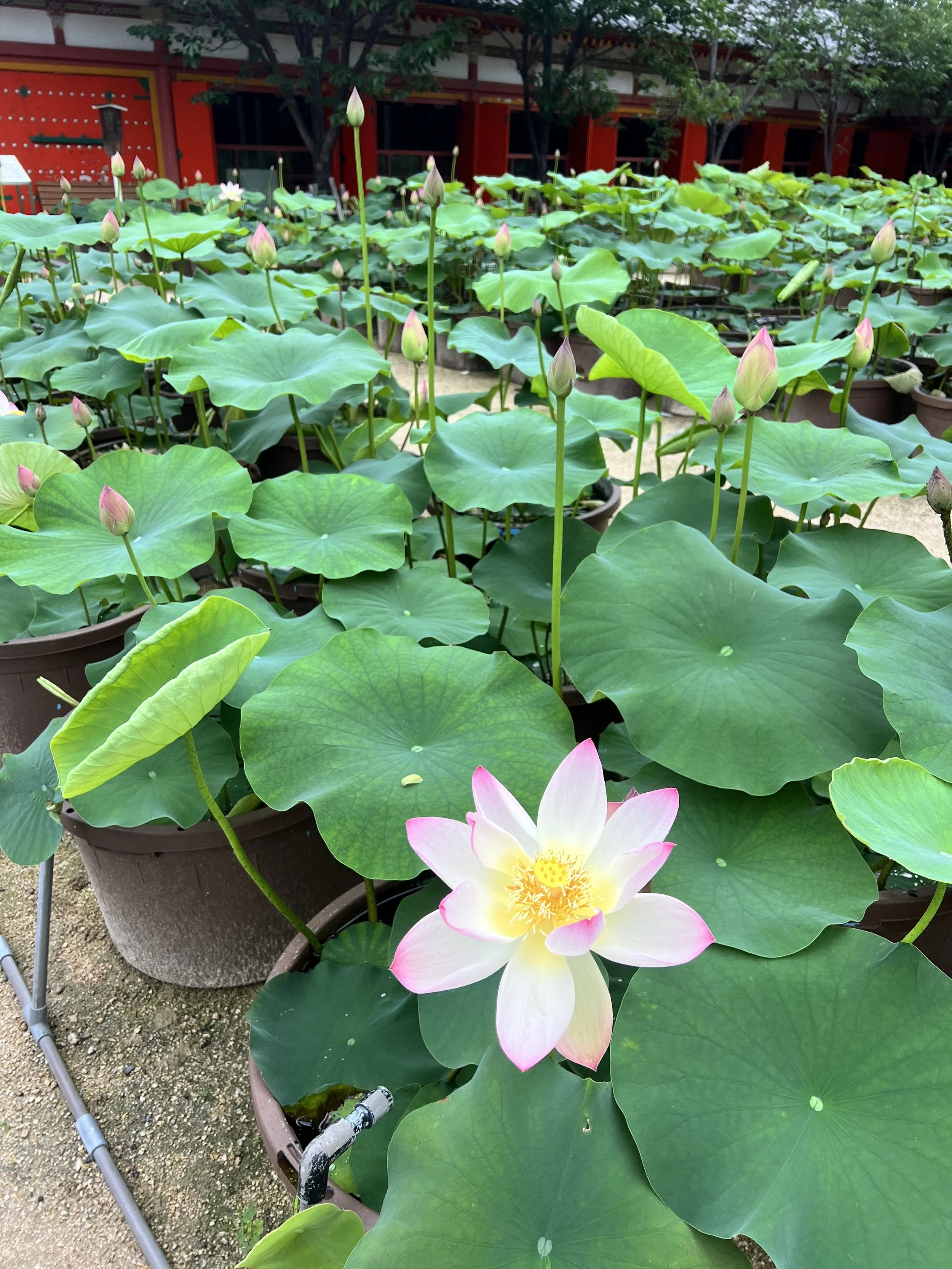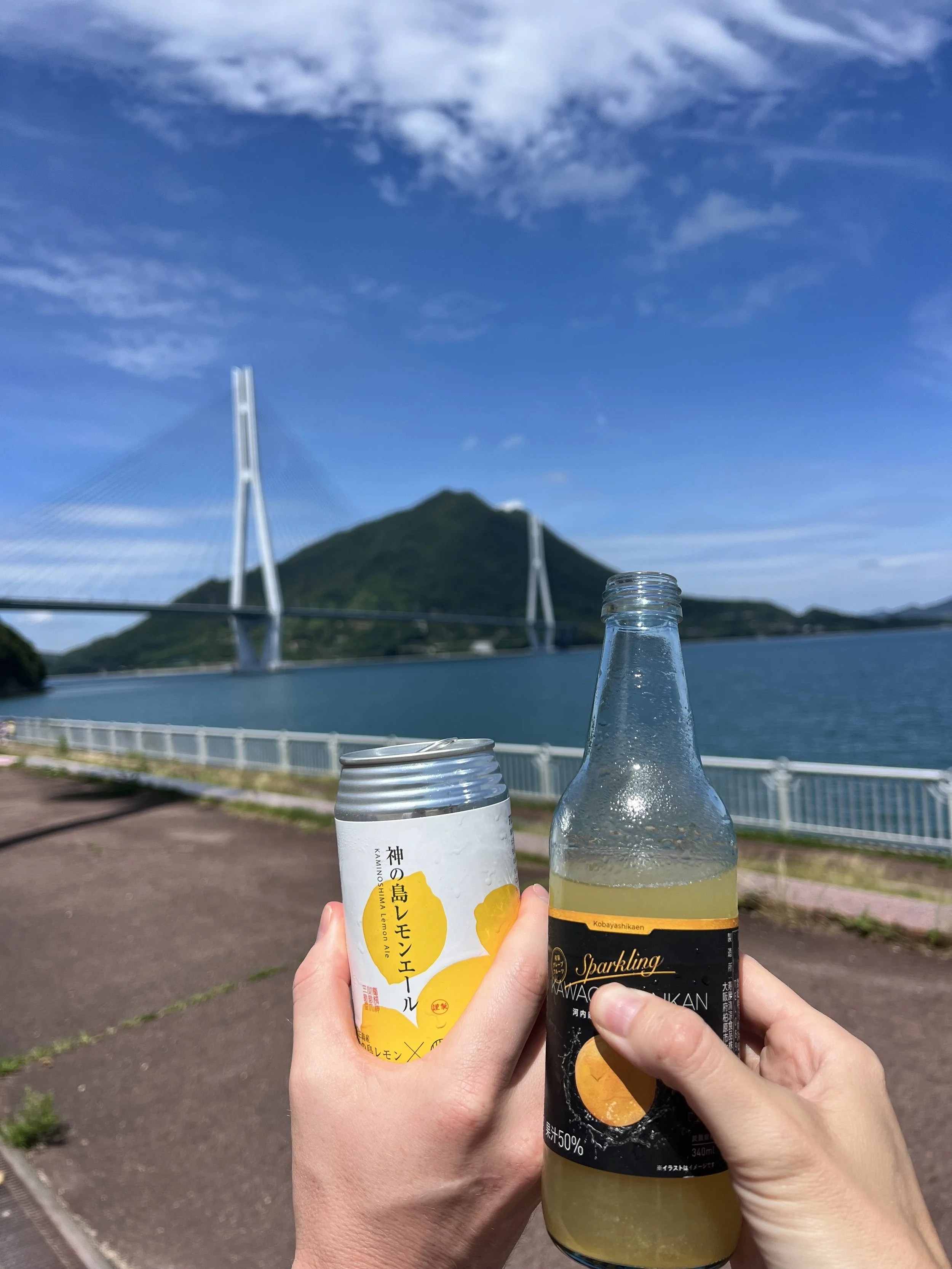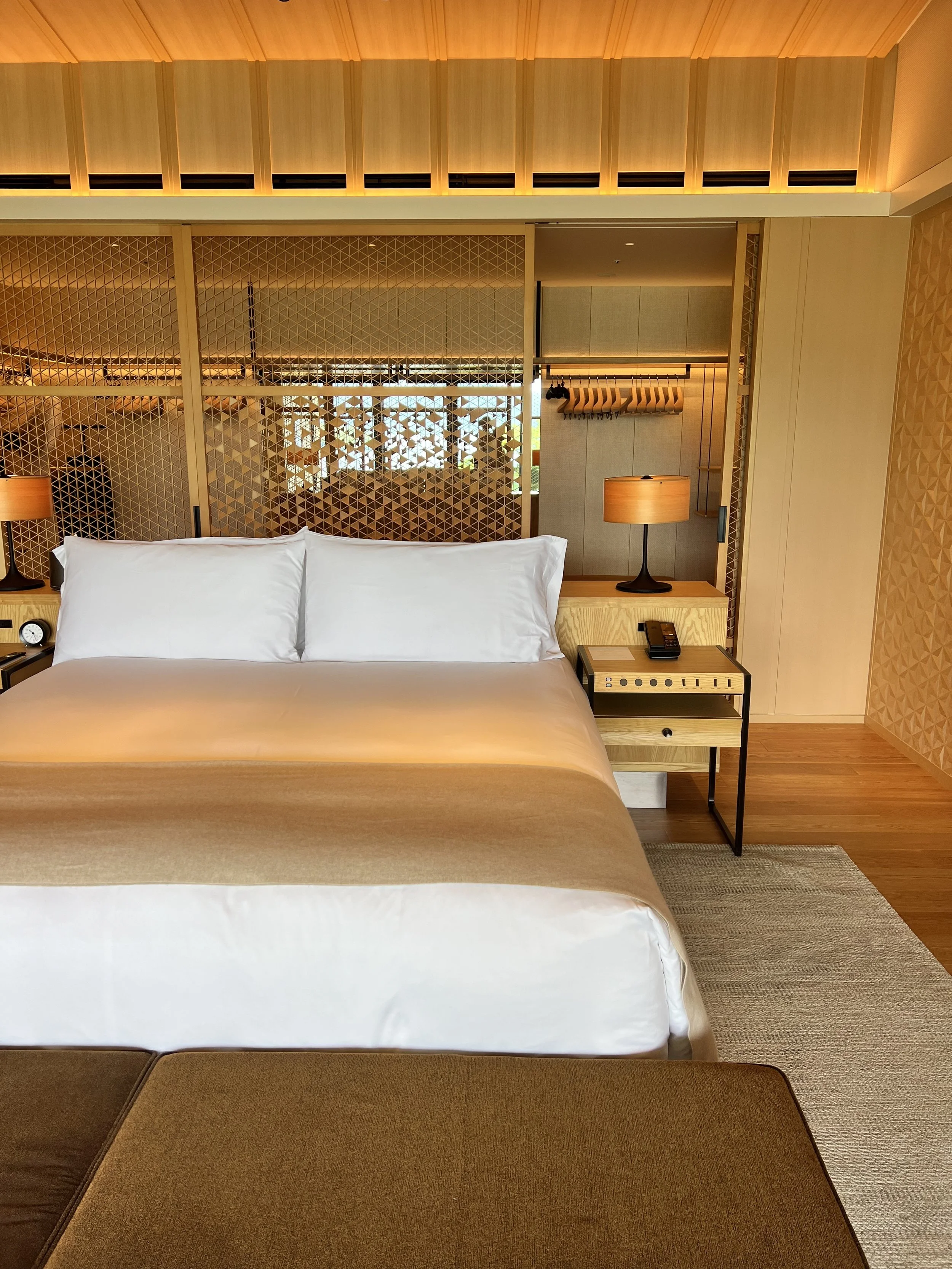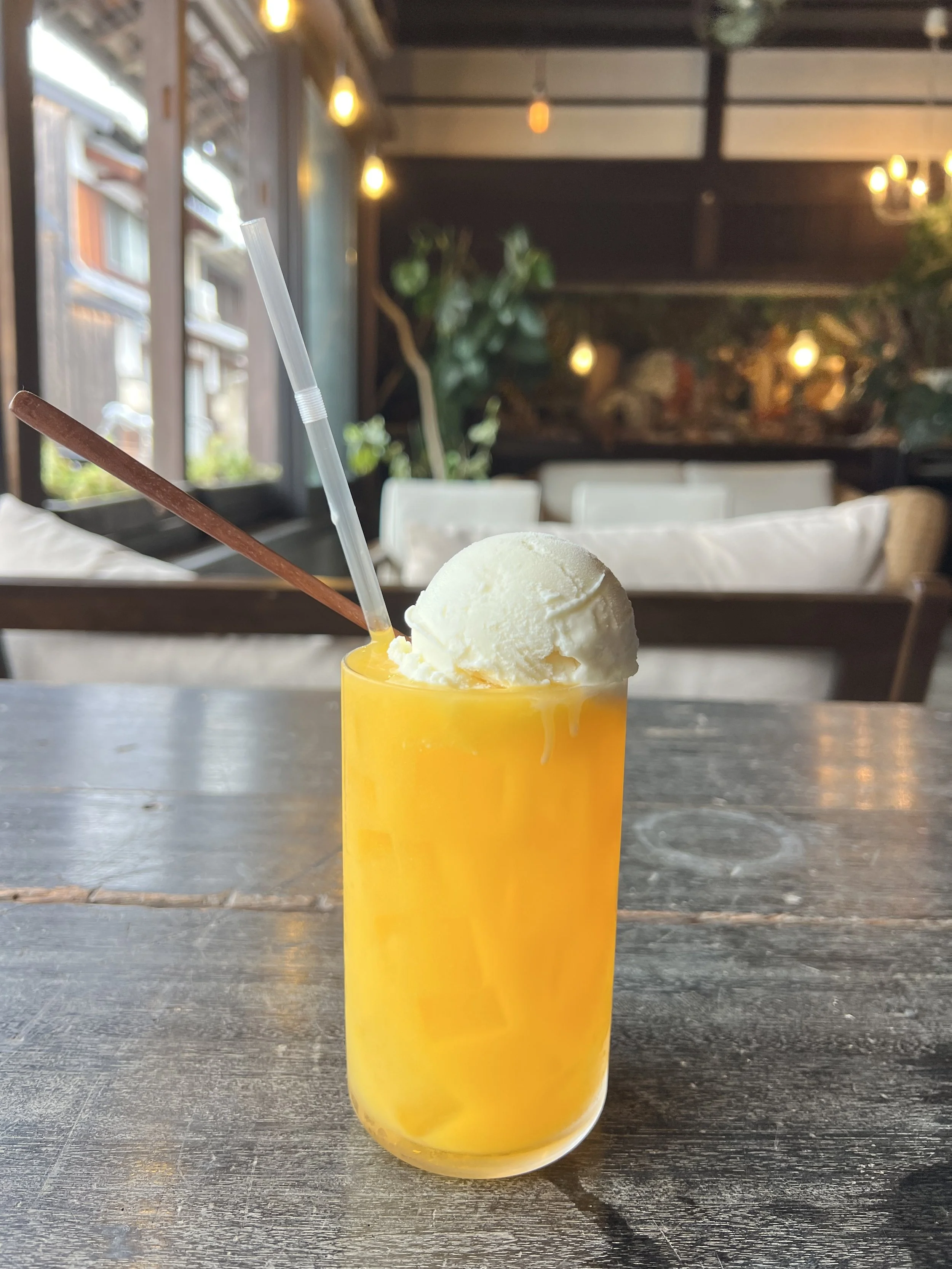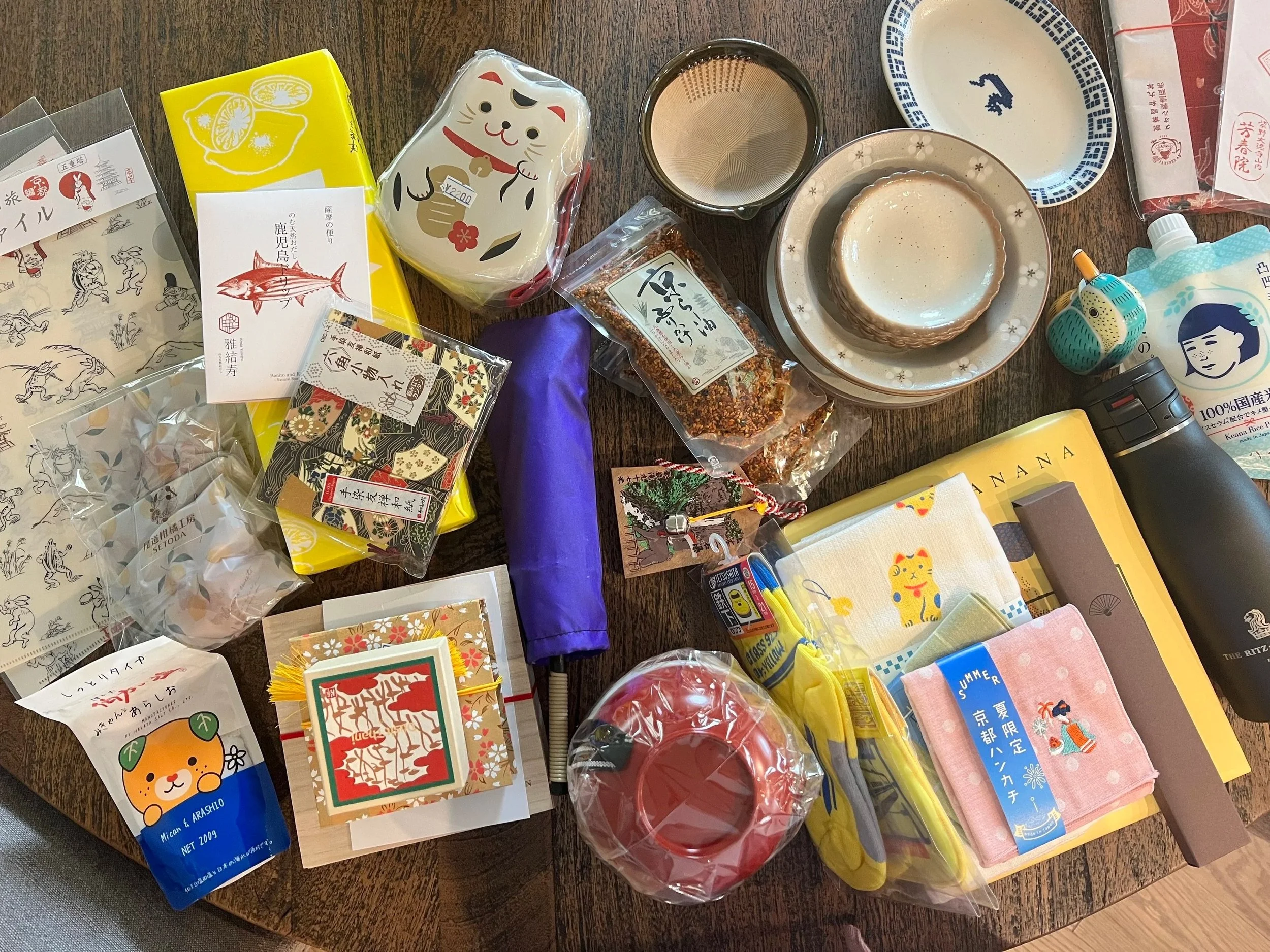11-Day Japan Guide
Shinkyō Bridge in Nikko
Since Japan reopened for tourism post-COVID, it’s popularity with American tourists has skyrocketed. Everyone is planning bucket list trips to the island to experience the unique culture, food and nightlife. I visited for two weeks this spring checking out Tokyo, Kyoto, Nikko and Ikuchijama Island and each destination was special in its own way. Use this travel guide to plan out the high-level portions of your itinerary, but I highly recommend using a pro for this destination — the transportation and logistics are tough!
Japan by train
Traveling through Japan by train is one of the most efficient, scenic, and stress-free ways to explore the country. The rail system connects major cities like Tokyo, Osaka, and Kyoto with charming small towns and countryside regions and most of the stations have English translations. For the Shinkansen, I recommend the Green Car with extra luggage space and sitting on the side with Mt. Fuji views (say a prayer that she’s visible!). High-speed Shinkansen bullet trains can be expensive at times, similarly priced to domestic plane tickets. When booking through me, I can coordinate a train assistant (highly recommended) to help you navigate the busy train stations and get you to the correct platform.
IMPORTANT JAPAN TRAVEL TIPS
Entry Requirements & Visas
U.S. travelers do not need a visa for stays under 90 days (tourism only).
Ensure your passport is valid for the duration of your trip (Japan does not require 6 months).
Complete the Visit Japan Web forms in advance for fast-track immigration and customs.
Money & Payments
Japan is still a cash-friendly culture, especially at small restaurants and local shops.
Carry some yen, but note most major cities accept credit cards.
ATMs that accept foreign cards can be found at 7-Eleven, Lawson, and Japan Post.
Transportation Tips
Trains are extremely punctual—arrive early and stand in the marked queues.
Suica / Pasmo IC cards are essential for subways and buses (you can now add them to Apple Wallet and there’s a U.S. English-friendly version of the Suica app).
Etiquette & Cultural Tips
Japan values quiet public spaces—keep conversations low on trains.
Always remove your shoes in homes, temples, and some restaurants.
Bowing is a common greeting; handshakes are okay with foreigners.
Tipping is not customary, the only time you would consider tipping is for a private guide and you would put your cash in a small envelope and hand it to your guide discreetly.
Tokyo
Most trips to Japan begin in Tokyo, the country’s busiest international gateway and one of the best-connected cities in the world. If possible, fly into Haneda Airport (HND)—it’s significantly closer to central Tokyo than Narita Airport (NRT), which typically requires a 1.5-hour transfer. Travelers arriving from the U.S. should prepare for jet lag, often waking up around 4–5 a.m. the first few mornings. Plan on spending at least four nights in Tokyo to adjust and experience the city’s major highlights before moving on to Kyoto, Osaka, or other destinations.
Tokyo is massive—the largest city in the world by population—yet incredibly clean, organized, and efficient. For first-time visitors, the best neighborhoods to stay in are Ginza and Toranomon Hills, both offering walkable dining, great shopping, and easy train access to Shinjuku and Shibuya. While Shinjuku and Shibuya are iconic, they’re also extremely crowded, making them better for day trips than overnight stays. Tokyo is full of luxury hotels, many occupying the upper floors of skyscrapers, so don’t be surprised if you take multiple elevators before reaching your room. These hotels are truly part of the experience, often featuring world-class restaurants, serene spas, and rooftop bars with panoramic city views.
Unlike some cities where you can arrive and improvise, Tokyo requires advance planning. Many experiences—like TeamLab Planets, cooking classes, cultural workshops, and guided tours—book out weeks in advance. Restaurant reservations are essential as well, especially for popular sushi counters or Michelin-rated spots with strict minimum spends and cancellation policies.
One of my favorite experiences in Tokyo was a guided tour of the Tsukiji Outer Market. Our guide met us at our hotel, navigated the metro with us, and led us through the market’s best tastings, stopping at hidden gems and local stalls we would have never found on our own. It was the perfect blend of culture, food, and insider access—exactly what makes Tokyo unforgettable.
Hotels
Contact me to book your hotels and receive exclusive perks like complimentary room upgrades, hotel credits, etc.
Bvlgari Tokyo – Ultra-modern Italian glamour with jaw-dropping skyline views and one of the most striking rooftop terraces in the city.
Aman Tokyo – A serene, minimalist sanctuary inspired by traditional Japanese design, offering the most peaceful spa experience in the capital.
The Okura Tokyo – A timeless classic blending refined Japanese artistry with impeccable service and spacious, beautifully restored interiors.
Four Seasons Tokyo at Otemachi – Contemporary luxury with sweeping views of the Imperial Palace and some of the best dining in the city.
The Peninsula Tokyo – Iconic, elegant, and perfectly located near the Imperial Palace with exceptional service and oversized, tech-forward rooms.
Ritz-Carlton Tokyo – Perched high above Midtown, it delivers glamorous sky-high suites and one of the city’s most impressive bar views.
Activities/Sightseeing
Tsukiji Outer Market Private Tour
Tuna auction (early morning, free, but requires tickets)
Harajuku & Shinkjuku walking tour
Sumo stable private practice viewing
Golden Gai bar hopping
Shopping
Pet or themed cafes
Tokyo Disneyland or DisneySea
Walking food tour
TeamLab Planets
Kyoto
Kyoto is the city that truly delivers the “wow” factor—a destination that feels like stepping back in time. Where Tokyo is sleek and high-tech, Kyoto is the cultural heart of Japan, filled with centuries-old temples, traditional wooden streets, tea houses, and serene gardens. It’s a very walkable city, easy to navigate by metro, bus, or taxi, and the Kamo River running through the center offers a peaceful, scenic place for strolls on sunny days.
When it comes to where to stay in Kyoto, the hotel scene is more understated compared to Tokyo. While there isn’t one definitive “must-stay” property, the Ritz-Carlton Kyoto stood out as my favorite for its river views, spacious rooms, and elevated service.
Plan to spend at least four nights in Kyoto, especially if you want to explore at a relaxed pace. If you’re considering Osaka, you can easily skip an overnight stay and take a day trip from Kyoto—it’s only a 45-minute train ride or drive.
Hiring a private guide for one day is highly recommended, especially if you want to visit top landmarks like the Golden Pavilion (Kinkaku-ji), Fushimi Inari Shrine, or the Arashiyama Bamboo Forest. A local expert will position you at the right spots, at the right times, while making transportation between sites seamless.
Kyoto is full of special cultural experiences, but the key is not to over-schedule. Choose one meaningful highlight each day and leave time to wander through back streets, discover local cafés, or pop into cozy izakayas. Customize your activities based on your interests—if you don’t love matcha, skip the tea ceremony; if you enjoy art, try something more unique. One of my favorite experiences in Kyoto was a private watercolor painting class inside a temple—an intimate, exclusive activity arranged through a travel advisor and the perfect personalized souvenir to bring home.
If you’re still feeling jetlagged, take advantage of the early morning and head to Higashiyama early to see the Yasaka Shrine and Hōkan-ji Temple (Yasaka Pagoda) before the crowds.
Hotels
Contact me to book your hotels and receive exclusive perks like complimentary room upgrades, hotel credits, etc.
Ritz-Carlton Kyoto – A serene luxury retreat along the Kamo River, offering spacious rooms, exceptional service, and easy access to Kyoto’s historic districts.
The Mitsui Kyoto – A design-forward, modern ryokan-style property built around a 300-year-old gate, featuring one of the most beautiful private onsen experiences in the city.
Park Hyatt Kyoto – A boutique, ultra-luxury hillside escape with sweeping views of Yasaka Pagoda and refined, contemporary interiors that blend seamlessly with Higashiyama’s old town charm.
Dusit Thani Kyoto – A stylish, Thai-influenced luxury hotel known for its warm hospitality, elegant rooms, and standout dining in a quiet but convenient neighborhood.
Activities/Sightseeing
SAMURAI NINJA MUSEUM Kyoto
Hōkan-ji Temple (Yasaka Pagoda)
Higashiyama Quarter
Tea Ceremony with geisha or monk
Nishiki Market
Day trip to Nara
Kyoto Botanical Garden
Arashiyama Bamboo Forest
Hozugawa River Boat Ride
Coffee by the river at WIFE & HUSBAND
Mountains or Beach
By this point in your Japan itinerary, you’re about 8–9 nights into your trip, which makes it the perfect time to switch up the pace. For nightlife lovers and foodies, Osaka is the obvious next stop—home to incredible sushi counters, Wagyu restaurants, and a lively dining scene that keeps going late into the night. But if Osaka isn’t calling your name and you’re craving something more peaceful and unique, this is the ideal moment to add in Hakone, Nikko, or Ikuchi Island to experience Japan’s natural beauty.
After busy city days walking 20,000+ steps, I found both Nikko and Ikuchi Island to be incredibly refreshing. They offer a total change of scenery—slower, quieter, and full of local character.
Hakone is the easiest nature getaway for travelers short on time since it sits conveniently along the Shinkansen route between Tokyo and Kyoto. While Mount Fuji is famously shy and often hidden behind clouds, Hakone gives you the best chance of catching a glimpse on a clear day. The area is more developed than Nikko or Ikuchi Island, with plenty of ryokans (traditional Japanese inns), onsen baths, museums, and lake cruises.
Nikko, about a 2.5-hour drive from Tokyo, is home to the Ritz-Carlton Nikko, one of the most beautiful luxury hotels in Japan overlooking Lake Chūzenji. This is the perfect stop to unwind—especially in spring or late fall—thanks to its stunning foliage, peaceful lakeside walking paths, waterfalls, and charming temple-filled town. If you enjoy hiking, biking, nature walks, or even fly fishing, Nikko offers all of it in one place.
Ikuchi Island, accessible via Fukuyama Station (1 hour 20 minutes from Kyoto by train, plus a 1-hour transfer), was one of the most surprising highlights of my trip. I jokingly call it the “Amalfi Coast of Japan” because the region grows nearly all of Japan’s lemons—expect lemon cakes, lemon beer, lemon ice cream… everything. The island is still up-and-coming, so travelers who prefer ultra-polished 5-star amenities may find it more rustic. However, the standout here is Azumi Setoda, a design-focused luxury retreat created by the founder of Aman. Built in a former estate of a wealthy fishing family, the property preserves its original history—right down to serving breakfast with the family’s heirloom tableware.
The island is also known for its cycling culture, with scenic bridge routes and races drawing visitors from around the world. We biked about 15 miles across Tatara Bridge, and while it was spectacular, it’s definitely a workout if you’re not used to uphill rides.
Ikuchi Island also has a unique temple (one of my favorites from the entire trip), a lovely bathhouse that Azumi guests can access for free, and a small but delicious dining scene. Expect to repeat a restaurant or two—but honestly, every meal we had was excellent, especially the multi-course dinner at Azumi. This stop is perfect for a two-night stay before continuing your Japan adventure.Hotels
Contact me to book your hotels and receive exclusive perks like complimentary room upgrades, hotel credits, etc.
Hotels
Gora Kadan
A legendary ryokan in Hakone, Gora Kadan blends traditional Japanese hospitality with understated luxury, natural hot springs, and serene mountain views.Azumi Setoda
Azumi Setoda is a beautifully restored former family estate on Ikuchi Island, offering refined minimalism, heartfelt local immersion, and a peaceful escape along the Seto Inland Sea.Ritz-Carlton Nikko
The Ritz-Carlton Nikko pairs lakeside tranquility with modern elegance, featuring spacious rooms, soothing hot springs, and direct access to Nikko’s natural and cultural beauty.
Souvenir Guide
Japan is one of the best countries in the world for thoughtful, high-quality souvenirs that feel both meaningful and practical. From artisan craftsmanship to gourmet treats, here are the top items worth packing in your suitcase—plus where to find them. I highly recommend bringing a packable bag in your suitcase so you have room to carry everything. There are amazing goodies to be found basically everywhere — train stations, antique shops, the food markets. Keep your eyes peeled and make a list if you have specific items in mind. If you’re set on purchasing any luxury goods or fashion like Onitsuka Tigers or vintage designer bags, make sure to bring your passport with you to the store, they process the tax refund on the spot.
🔪 Japanese Knives
A handcrafted Japanese knife is one of the most iconic souvenirs you can bring home. Look for shokunin-made blades in historic knife districts like Kappabashi Street (Tokyo) or Sakai City (Osaka), known as the birthplace of Japanese knife-making. Shops like Tsubaya, Kamata, and Tower Knives offer expert guidance, custom engraving, and secure packaging for travel.
🍬 Unique Japanese Candies & Snacks
From matcha KitKats to beautifully packaged wagashi, Japan’s snack scene is unbeatable. Airports will always stock the basics, but for more unique finds, browse Don Quijote (Donki), Tokyo Station’s GRANSTA, or department store food halls like Isetan Shinjuku and Daimaru Kyoto. For traditional sweets, look for regional specialties like yatsuhashi in Kyoto or momiji manju in Hiroshima. I bought a ton of mini lemon cakes that were individually wrapped while on Ikuchi Island.
🍶 Sake & Japanese Whiskey
Japan’s sake and whiskey culture is world-class, and bringing a bottle home is like bottling up a little piece of the trip.
Sake: Visit Fushimi (Kyoto), one of Japan’s premier brewing districts, or shop curated bottles at Isetan, Takashimaya, or Hasegawa Saketen inside Tokyo Station. Staff can help match flavor profiles to your preferences.
Whiskey: Demand is high, but you can still find gems at Bic Camera, Yodobashi, and department store liquor shops. Travelers visiting Hokkaido or Osaka may have better luck with limited-edition bottles, and the Suntory Yamazaki Distillery near Kyoto has an excellent shop post-tour.
🎎 Bonus: Other Great Japanese Souvenirs
Ceramics: Beautiful handcrafted pieces from Seto, Mashiko, and Kyoto’s Kiyomizu district. I found some amazing pieces at Nishiki Market that were inexpensive and locally made. They even wrapped them up safely for travel.
Tenugui (hand towels): Lightweight, affordable, and full of personality—check Kamawanu in Tokyo.
Stationery: High-quality notebooks and pens from Itoya, Loft, and Tokyu Hands.



